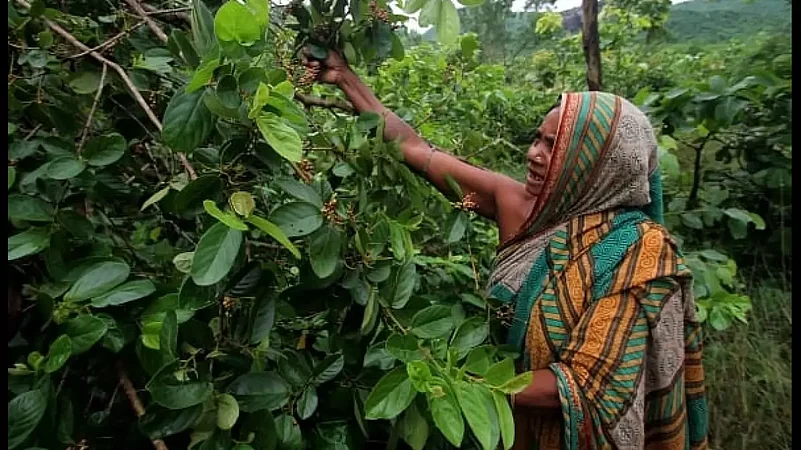Reports estimate that around 30 per cent of India’s geographic area is degraded. This has dire consequences for forest-dependent communities. The effects include loss in biodiversity, soil erosion leading to low agricultural yield, reduced income, and weakened ability to mitigate floods, landslides, and droughts — all of which dampen the economy as a whole.
Planting trees is one of the proven methods of not only reviving the landscape but also the incomes of the families dependent on forests.
Restoring green cover, reviving livelihoods
Planting trees is highly labour-intensive. Tree planting projects require a significant workforce for multiple aspects such as preparing the saplings and tending to them in the nursery. This is followed by the actual planting of the saplings and careful maintenance.
Providing fair wages to plantation workers is an integral component of a responsible and ethical reforestation program. This goes a long way in making the initiatives viable and sustainable.
The benefits of providing reasonable remuneration permeate all aspects of society. One of its major impacts is on the lives of female farmers. As women farmers contribute significantly to the plantation, providing them with equitable payments elevates their position in their communities and provides them greater access to resources and improves their overall quality of life.
Improved agricultural yields
Deforestation brought with it the serious concern of food security. Soil erosion inadvertently led to poor soil quality and as a result lower agricultural yields. It also brought with it the issue of sedimentation in water bodies which adversely affects marine life. Overall, it leads to a weakened ecosystem that has a negative impact on the community’s sustenance.
Agroforestry, an approach that integrates trees in agricultural systems, has proven to be very beneficial for increasing food yield. In addition to preventing degradation, trees can successfully combat soil erosion and nutrient loss. It also makes the soil more arable and conducive for a variety of crops.
In addition to creating and maintaining a healthy ecosystem, agroforestry also provides the right environment for beekeeping. Beekeeping helps farmers on multiple fronts. Honeybees are successful pollinators — well-managed pollination is known to yield better fruits, seeds, and vegetables. Some of the trees that do well with the help of pollination by bees are neem, mango, and citrus fruits. Honeybees also produce honey and other lucrative products such as beeswax, royal jelly, bee pollen, propolis, etc.
Promoting commerce
With careful planning, restoring the tree canopy can significantly boost trade. Planting high-value trees such as teak and bamboo can provide a valuable revenue stream.
Another avenue of income-generating resources are the non-timber forest products (NTFPs). These non-wood products such as berries, honey, mushrooms, medicinal plants, mahua seeds, karanj, etc. have a very good economic potential and can supplement the income of the local communities.
Some estimates suggest that close to 60 per cent of the recorded forest revenue in India comes from NTFPs. Although, admittedly, there are certain flaws in the market mechanism, there is an acute need to arrest land degradation. Tree planting is an important approach to diversify and drive growth in the NTFP industry.
A collective effort
Planting trees is a huge undertaking. It takes meticulous planning, in-depth research, and collaboration with local communities among many other things. However, there are ways that ensure everyone can be part of this collective effort to heal the planet and support the livelihoods of forest-dependent communities. There are many ways one can participate in or contribute to initiatives led by tree-planting organisations.
At Grow-Trees, we have the concept of Greet with Trees. It is a sustainable gifting program that allows one to gift trees in the form of eTreeCertificate to their loved ones. Trees may be an unconventional gift, but they are also a gift that are rich in meaning and enduring in value. They are gifts that transcend care and compassion and create employment and boost the rural handicrafts industry in addition to bettering the future of your loved one.
(Supriya Patil is an environmentalist. At Grow-Trees.com, she is helping corporates to mobilise the resources for adopting the triple bottom line in the businesses by developing various social impact-driven projects. In her free time, she likes to visit various sanctuaries in India, travel to unexplored places, and spend time with her pets.)
















